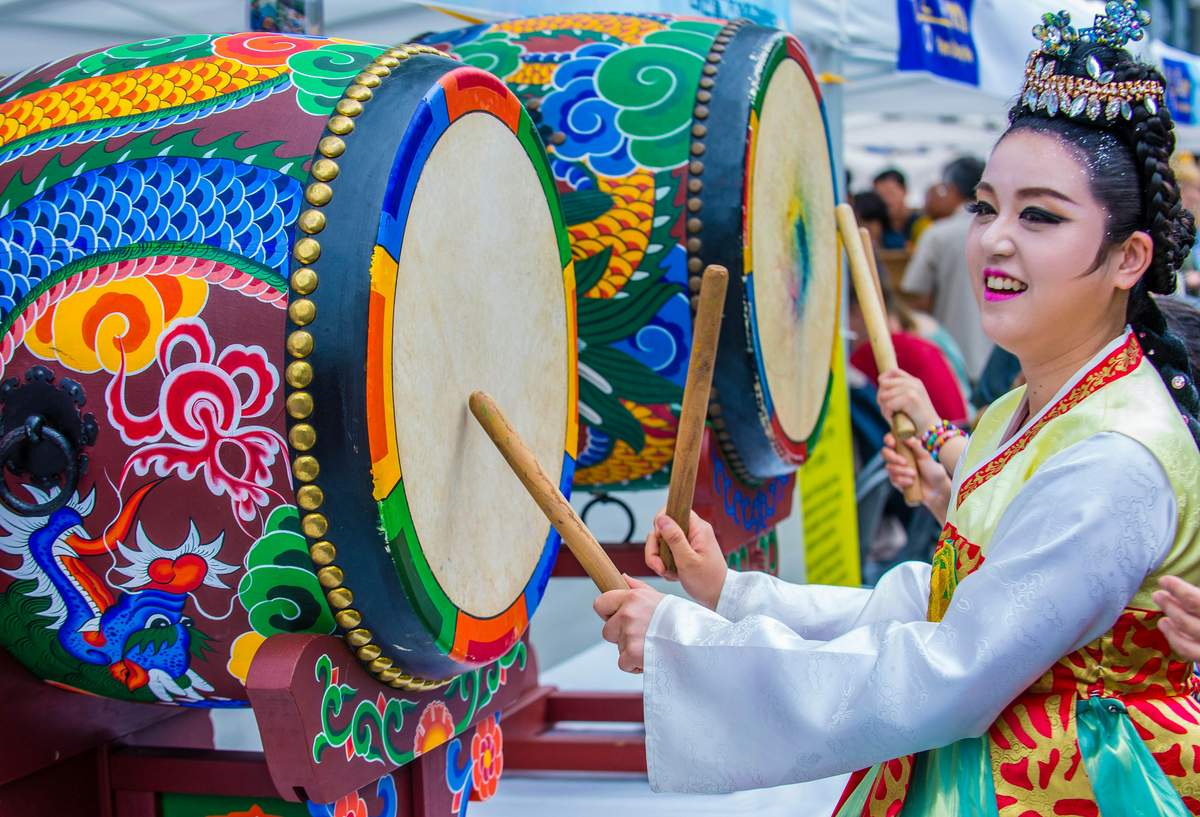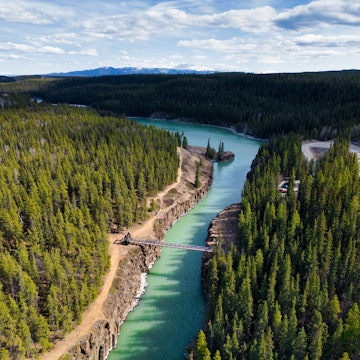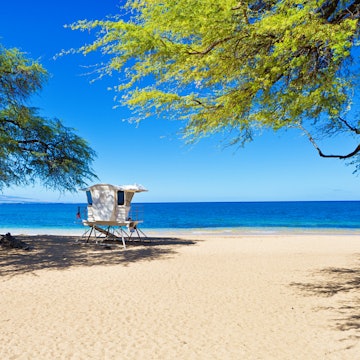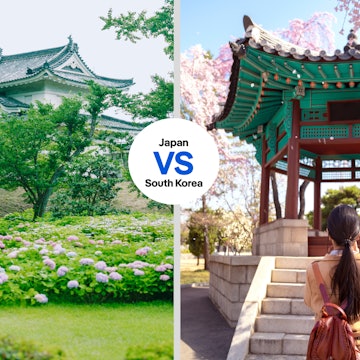
The best road trips in South Korea weave through mountains, islands and history

Feb 17, 2024 • 10 min read

Taking a road trip in South Korea is a great way to see another side to the country © Henn Photography / Getty Images
South Korea might not leap out as the obvious place for a road trip. The country's superb public transportation means a private vehicle is rarely necessary, and the traffic in Seoul can make you question the point of the open road when you spend so much time at a standstill.
But renting a car and escaping the capital opens up some otherwise inaccessible (or at least more time-consuming) travel possibilities and gives you a chance to savor the charms of Korea's smaller cities and rural hamlets.
With well-maintained roads and abundant signage, just about the only thing you'll have to worry about is choosing where to go next. Here are some of the best road trips in Korea for natural vistas, history, food and off-the-beaten-path exploration.
1. The grand Korean tour
Best road trip for a bit of everything
Seoul–Busan; 599km (72 miles); allow 12 days
Sure, you could zip from Seoul to Busan in three hours on the high-speed KTX train, but then you'd miss out on everything this road trip that highlights a good sample of all South Korea has to offer. After exploring Seoul, make the short jaunt south to Suwon, renowned for its galbi (ribs) and Hwaseong, a majestic 18th-century walled fortress that encircles the old city.
Two hours south of Suwon, the modern and ancient worlds butt up against each other in Sejong, a city barely 10 years old that houses many government institutions, and Gongju, the former capital of the Baekje kingdom (18 BCE–660 CE). Delve into history at Gongsan-seong Fortress and the Gongju National Museum.
Just 20km (12.5 miles) southeast, several universities give Daejeon a vibrant, youthful atmosphere. On the northeast edge of the city, spidery Daecheongho Lake has isolated villages and scenic overlooks to discover. Cross from agricultural Jeolla-do Province to industrial Gyeongsang-do Province via Deogyusan National Park, where the mountains are dotted with waterfalls, Buddhist temples and hiking trails.
After this rural interlude, wrap up in Korea's populous southeast. Two hours east of Deogyusan is Daegu, famous for its herbal medicine market and historic churches, and an hour and a half beyond is Ulsan, home to enormous shipyards and herons nesting in bamboo groves along the Taehwagang River. It's then a short sprint down the coast to Busan, where beaches and a vibrant cultural scene await.
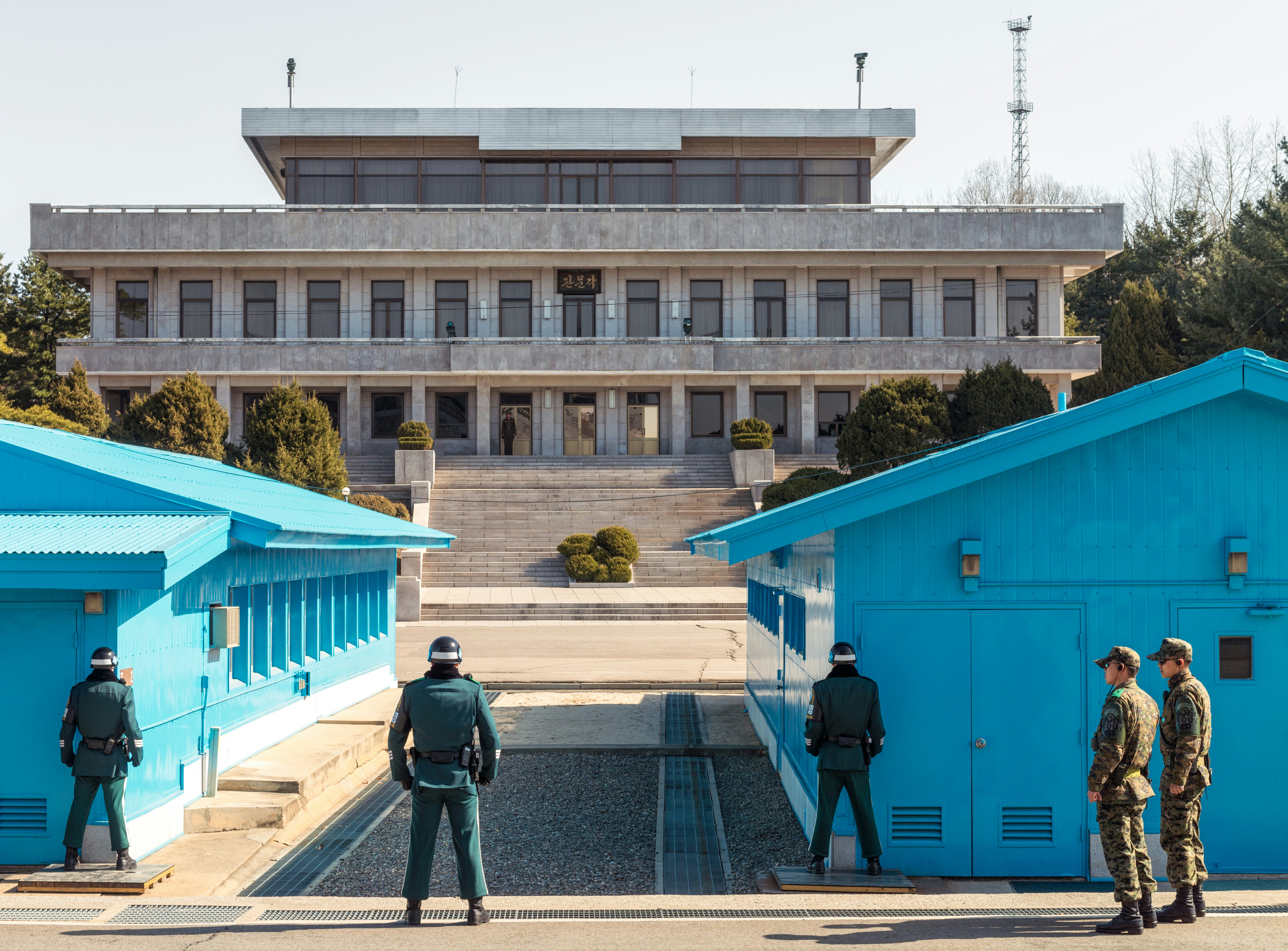
2. Tracing the DMZ
Best road trip for understanding Korea's recent history
Incheon–Sokcho; 385km (240 miles); allow 7 days
Actually visiting North Korea can be a difficult trip to pull off, but this road trip in the south gets you close enough to peer into this hermitic country and provides an up-close look at the consequences of the peninsula's tragic division. The irony is that this trip is one of South Korea's most peaceful drives, full of rice paddies and quiet farmsteads, but look closely, and you'll notice barbed wire and tank traps on the roadside.
Start in Incheon, where a hillside memorial commemorates the Korean War's most consequential battle, when UN Command forces stormed the city and prevented the North from taking the entire peninsula. Motor an hour northwest to Ganghwa-do Island, separated from the DPRK only by the Han River. At the island's northern tip is Ganghwa Peace Observatory, from where you can gaze across the water at some of North Korea's southernmost villages.
Imjingak is the site of war memorials and bridges that once linked North and South. Pause your road trip here and sign up in advance for a tour of the Joint Security Area in Panmunjom, a place unlike anywhere else on the peninsula. The sense of Cold War drama is powerful, as soldiers from either side of the divide watch each other from just meters away.
From Imjingak, spend a day or two meandering northeast through the sparsely populated regions of Cheorwon, Hwacheon and Inje – all claimed by North Korea before the war – where battlefields, old barracks and even the shell of a local Workers' Party of Korea Building recall the not-so-distant past. Finish up the east coast, some 50km (31 miles) from Inje, where Sokcho's Abai Village neighborhood is a lively fishing community founded by people who fled from the North.

3. The Baekdudaegan Route
Best road trip for mountains and nature
Sokcho–Jirisan National Park; 781km (485 miles); allow 14 days
This road trip traces the Baekdudaegan mountain range, Korea's defining geographical feature, taking you through some of the most beautiful corners of the country. Just outside Sokcho, Seoraksan National Park serves up some of South Korea's most dramatic landscapes, with granite peaks right out of a traditional watercolor painting nearly tumbling into the sea.
Drive past racks of drying pollack, a local specialty, and explore rushing mountain streams and ghostly birch forests on a detour inland through Inje County on your way to the Daegwallyeong plateau, which features ranches, sheep farms and epic views of the East Sea.
An hour or so southwest, the Pyeongchang and Jeongseon regions, settings for the 2018 Winter Olympics, are now centers for ecotourism, whitewater rafting and zip lines, with rural markets selling herbs collected from the surrounding mountains. Spend at least three days moseying southwest through Taebaeksan, Sobaeksan and Songnisan national parks, taking time to discover shrine-dotted sacred peaks, cozy villages and apple farms.
Hamyang is where you'll find the charming Gapyeong Hanok Village, filled with traditional houses, and it's the jumping-off point for Jirisan National Park, home to Asiatic black bears and South Korea's tallest mainland peak.

4. Korea's historic southeast
Best road trip for history and traditional culture
Andong–Seokguram Grotto; 233km (145 miles); allow 5 days
"A journey into the past" might be a cliche, but what else can you call a drive through villages of thatch-roofed homes, time-honored folk practices and ancient royal edifices? Andong is the center of Korea's Confucian heartland, and in the surrounding countryside are the 16th-century Dosan Seowon, once the country's most famous Confucian academy, and Hahoe Folk Village, a settlement of tile- and thatch-roofed traditional hanok homes.
Many residents here can trace their lineage back to the scholars and aristocrats who lived here hundreds of years ago. Sample the old lifestyle by staying in a hanok here or in Deokcheon, a 600-year-old clan village where experiential programs in traditional activities such as tea-brewing and fabric-dying are also on offer.
About 150km (93 miles) to the southeast, Yangdong Folk Village is another well-preserved community. Dating to the 15th century, it's more humble than Hahoe. From Yangdong, it's just a half hour to Gyeongju, once the capital of the Silla dynasty – a must-visit for anyone interested in Korean history.
Few sights in the country are more beautiful than Anapji Pond, particularly when the pavilions that overlook it are lit up in the evening. A short 15km (9-mile) drive from Gyeongju, Bulguk-sa Temple and Seokguram Grotto are two of Korean Buddhism's most enchanting ancient sites.

5. A Jeolla-do food tour
Best road trip for foodies
Jeonju–Mokpo; 194km (121 miles); allow 6 days
Ditch the GPS and follow your stomach on this road trip around Jeolla-do Province, where Korea's rice basket combines with miles of coastline to create what is without doubt the country's best region for food. Start in Jeonju, which is famed for its bibimbap (rice with vegetables, wild mountain herbs, red pepper paste, raw beef and egg, traditionally prepared in a hot stone bowl) and kongnamul gukbap (a spicy, clean-tasting soup featuring rice and bean sprouts).
Also duck into Jeonju's makgeolli alleys, where simple taverns serve this cloudy rice wine with overly generous helpings of kimchi pancakes, pork trotters, grilled fish and lots more. Around 75km (46 miles) to the southwest, Baekyang-sa is the home temple of the famed chef and monk Jeong Kwan. Sign up for an overnight Templestay here to experience Buddhist temple cuisine, a refined form of vegetarian cooking that uses only organic ingredients and eschews strong flavors.
Gwangju is the home of tteokgalbi (grilled short rib patties) and flavorful ori-tang (duck soup). At the tip of the peninsula, an hour to the southwest, Mokpo harvests the bounty of the surrounding waters. Feast on octopus, fish and numerous types of seaweed, and put your foodie credentials to the test with a plate of hongeo (fermented skate).

6. South Korea's southern coast
Best road trip for stunning coastal vistas
Mokpo–Busan; 446km (277 miles); allow 10 days
From Mokpo, a drive along Korea's southern coast is a continual negotiation between land and water. Extreme tides create enormous mudflats that sometimes allow you to walk from island to island, harvested seaweed dries on clotheslines, and fishing boats leave shore in search of the day's catch.
This road trip goes through Boseong, where lush fields of tea plants line the hillsides, and Suncheon-man Bay Ecological Park, one of the world's largest coastal wetlands and a resting place for migratory birds in winter. Two hours apart, Yeosu and Tongyeong sit at the tips of two peninsulas facing island-dotted bays. Deciding which has the more beautiful setting is an argument you'll never settle.
Driving between these two towns, you'll pass stands of yuja (yuzu) trees. Consider a side trip to the island settlement of Namhae, where residents use torches to gather octopus and crabs from the mudflats at night. Leaving Tongyeong, a curving 75km (46-mile) drive brings you to the Jinhae district of Changwon, the setting for Korea's most dramatic displays of cherry blossoms in spring. To wrap up, pull into port in Busan for beaches, nightlife and its cosmopolitan art scene.

7. Jeju Loop
Best road trip for island vibes
Jeju City–Jeju City; 211km (131 miles); allow 3 days
Toss a bag of gyul (tangerines) in the passenger seat, slip on some shades, put the top down and cruise the 1132, the highway that traces the coastline of Jeju-do island.
Jeju-si City is a good spot to swot up on the island's unique history, at Jeju National Museum. Fill up on pork belly produced from the island's famous black pigs, then head east or west – it doesn't matter which, since you'll find yourself back here eventually.
Highlights of a drive around Jeju include the UNESCO-listed Geomunoreum Lava Tube System and the dramatic Seongsan Ilchul-bong tuff cone, a famed spot for sunrises. It's also worth visiting the Jeongbang Waterfall, which tumbles from a cliff directly into the sea, and Jungmun Beach, which is popular with surfers.
As you circle the island, be sure to keep an eye out for the many things that set Jeju apart from the rest of the country. Elderly female divers known as haenyeo plunge into the waves to harvest abalone and seaweed, unaided by air tanks. Walls of stacked basalt stone known as batdam divide citrus fields, and tangled forests called gotjawal grow thick atop volcanic cones.
Make detours to beaches, cute cafes and local breweries such as Magpie, and afterward, head inland to explore Hallasan, a giant shield volcano that's South Korea's highest peak. The most straightforward approaches are coming south from Jeju-si City or north from Jungmun Beach, both on highway 1139.

Using South Korea's Hi-Pass and other tips for driving in South Korea
Koreans aren't bad drivers, but locals have a reputation for being impatient, and traffic laws aren't followed as faithfully as you may be used to at home. Drive with caution, and don't expect drivers to yield. You'll likely find yourself stuck in traffic with thousands of vacationing Seoulites if you try to drive out of the capital on a Friday night or Saturday morning or into town on a Sunday night. Avoid these times if you can.
South Korean highways have a toll system called Hi-Pass, which is administered without drivers having to stop. When renting a car, make sure that it comes with a Hi-Pass transceiver. You may still have to pay the tolls, but at least this way you can do so when you return the car and avoid an annoying bill later on.
South Korea's highway rest stops, called hyugeso, are a national treasure. Uniformly large, spotless and fitted out with facilities such as cafeterias and scenic overlooks, they're terrific places to take a break and chow down on snacks such as hodu-gwaja (small cakes with walnuts and red bean paste inside).
Google Maps likely won't work for navigation in South Korea. Instead, download and use the domestic KakaoMap app. Motorcycles aren't allowed on major highways in Korea, so if you switch your vehicle type to motorcycle (menu / settings / car navigation / vehicle type), the app will keep you on the more scenic backroads.





